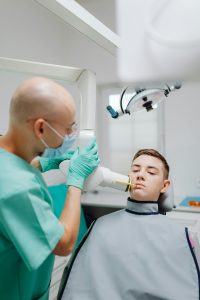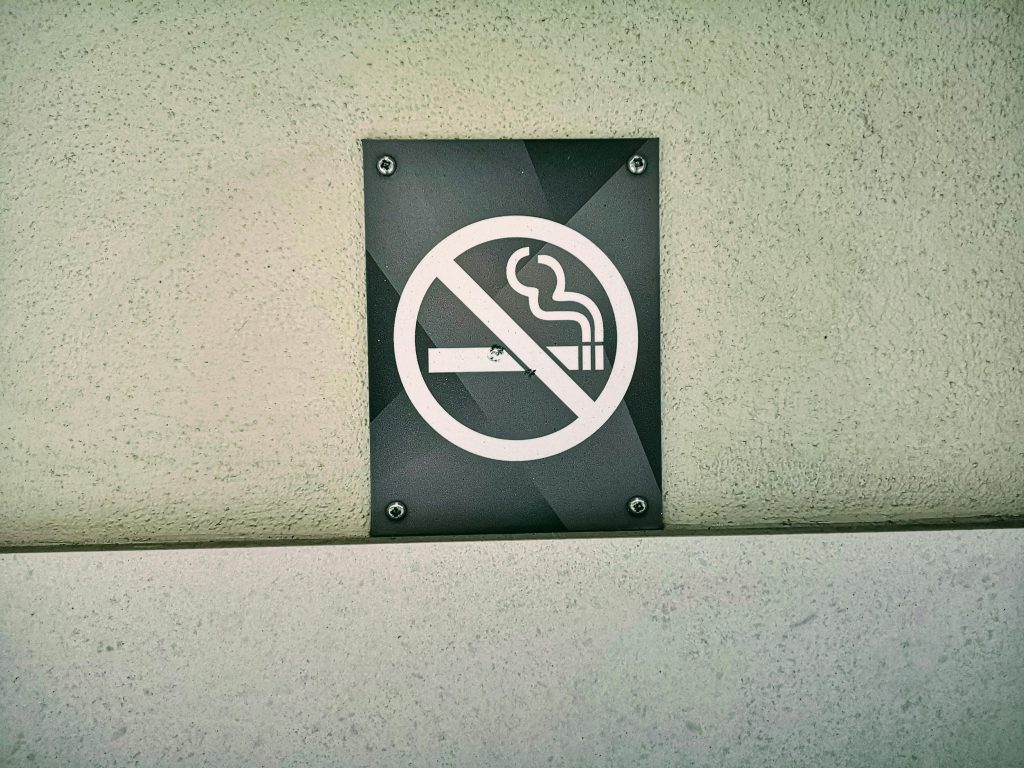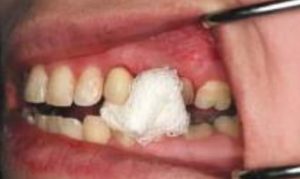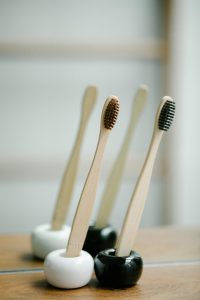Tooth extraction is a common dental procedure, but the risk of developing dry socket—a painful condition that can delay healing—remains a concern. But how do you prevent dry socket effectively? This comprehensive guide provides you with everything you need to know to prevent dry socket and ensure a smooth recovery after a tooth extraction.
Table of Contents
What is Dry Socket?
Before learning how do you prevent dry socket, it is important to understand what a dry socket actually is.
Dry socket, also known as alveolar osteitis, is a condition that can occur after a tooth extraction. It happens when the blood clot that forms at the site of the extraction either dissolves or dislodges before the wound has fully healed. This exposes the underlying bone and nerves, leading to intense pain and delaying the healing process.
Symptoms of Dry Socket
If you know about the symptoms of dry socket, you will understand how do you prevent dry socket. Although there are many symptoms, including those like fever, following is a list of most common symptoms:
- You will feel severe pain within a few days after a tooth extraction: Postsurgical pain that decreases at first but begins to increase on the third or fourth day, is probably a symptom of dry socket
- Your bone will start to show at the extraction site
- Your breath will start to smell bad and you will have unpleasant taste in mouth
- You may experience referred pain, radiating to ear, eye, temple or neck
Risk Factors for Dry Socket
There are certain factors which can increase the likelihood of developing a dry socket. Some of these include:
- Smoking or using tobacco products
- Poor oral hygiene
- Traumatic extraction or a difficult surgical procedure
- Previous history of dry socket
- Use of birth control pills or other medications that affect blood clotting
- Pre-existing infections or inflammation in the mouth
Now that you understand what a dry socket is, the following information will help in understanding how do you prevent a dry socket. Just like there are risk factors for developing dry socket, there are also some preventive factors by which you can prevent dry socket from happening. These include pre-extraction as well as post-extraction factors.
How do you prevent dry socket: Pre-Extraction Preparation
Before undergoing a tooth extraction, taking certain precautions can reduce the risk of developing dry socket:
Consult with Your Dentist

Discuss any medical conditions, medications, and concerns with your dentist. They can provide personalized advice to help minimize risks. Make sure to tell your dentist your detailed medical and surgical history, so he or she can give you instructions accordingly.
Quit Smoking

Smoking significantly increases the risk of dry socket. Consider quitting or at least refraining from smoking several days before and after the extraction.
Oral Hygiene

Maintain excellent oral hygiene leading up to the extraction. This reduces the risk of infection and promotes faster healing.
Brush your teeth twice a day, use a mouthwash regularly to keep your mouth fresh and free of bacteria, and use a dental floss to remove any food particles which are stuck between your teeth.
How Do You Prevent Dry Socket: Post-Extraction Care
The care you take immediately following your tooth extraction is crucial in preventing dry socket. Make sure to take good care of your extraction site for the first week after extraction. Follow these steps:
Immediate Aftercare
1. Bite on Gauze

Your dentist will place a gauze pad over the extraction site. Bite down gently but firmly for 30-45 minutes to help form a blood clot. Make sure that when you bite down on the gauze, pressure is being applied on the extraction site.
2. Avoid Rinsing and Spitting

For the first 24 hours, avoid rinsing your mouth, spitting, or using a straw. These actions can dislodge the blood clot by creating pressure inside your mouth and lead to dry socket.
Pain Management
Use Prescribed Medications
Take any prescribed pain medications as directed by your dentist. Make sure to read the medications’ instruction manual before you use it.
Use antibiotic mouthwash
Using an antibiotic mouthwash after your oral surgery not only prevents bacterial infection, but also gives you relief from tooth pain. Use it as per the instructions of your dentist.
How Do You Prevent Dry Socket: Additional tips
In addition to the general guidelines provided, there are further precautions and tips which must be mentioned in the discussion of how do you prevent dry socket.
Some of these tips are as follows:
Avoid Carbonated Beverages

Carbonated drinks can dislodge the blood clot, so it’s best if you avoid them for at least 48 hours post-extraction.
Avoid Alcohol

Alcohol can interfere with the healing process and should be avoided for at least 24 hours after extraction.
Avoid Touching the Wound
Keep your fingers and tongue away from the extraction site to prevent dislodging the clot and introducing bacteria.
Although if you have sutures in your mouth, they may feel very tempting for your tongue to touch, but you should avoid touching it.
Use a Soft-Bristled Toothbrush

When you resume brushing, use a soft-bristled toothbrush and be very gentle around the extraction site to avoid irritation and reduce the chances of any complication.
Follow-Up Visits
Attend all follow-up appointments with your dentist to ensure the extraction site is healing properly.
Dietary Recommendations

Proper nutrition plays a vital role in recovery. Here are some dietary tips to support healing:
Nutrient-Rich Foods
Consume foods high in vitamins and minerals, such as leafy greens, dairy products, and lean proteins, to support tissue repair and healing.
Hydration
Stay well-hydrated by drinking water regularly. Proper hydration aids in the healing process and helps prevent complications.
Supplements
Consider taking supplements like Vitamin C, Zinc, and Calcium, after consulting with your dentist, to boost your body’s healing capabilities.
How Do You Prevent Dry Socket: Psychological Aspects
Dealing with pain and the recovery process can be stressful. Dealing with this stress is also important in order to avoid the occurrence of dry socket Here are some tips to manage the psychological aspects:
1. Relaxation Techniques

Practice relaxation techniques such as deep breathing, meditation, or yoga to manage stress and pain.
2. Distraction

Engage in activities that distract you from pain, such as reading, watching movies, listening to relaxing music, or anything which will take your focus away from the pain you might be feeling.
3. Support System

Lean on friends and family for emotional support. Talking about your concerns and experiences can be very helpful.
Misconceptions About Dry Socket
There are several misconceptions regarding dry socket in patient’s mind, which must be addressed. A few of them are here:
Myth: Only Smokers Get Dry Socket
While smoking increases the risk, anyone can develop dry socket if proper care is not taken post-extraction.
Myth: Dry socket is an Infection
Infection is referred to that which is caused by bacteria and leads to pus formation. Dry socket is not an infection but a complication that exposes the bone and nerves, leading to pain.
Myth: It Will Heal Quickly Without Treatment
While dry socket will eventually heal, it can take longer and be more painful without proper treatment. Since your bone is exposed, you are at an increased risk of further complicating the case. Untreated dry socket can lead to bone necrosis and throbbing pain.
How Do You Prevent Dry Socket: Professional Recommendations
Dentists often provide specific recommendations based on individual cases. Here are some commonly suggested practices that you can also follow:
Use of an Antiseptic Mouthwash
Your dentist might recommend an antiseptic mouthwash to reduce the risk of infection and promote healing.
While dry socket itself is not an infection, still you need to keep your extraction site free of any bacteria and keep it clean. This is why the use of antiseptic mouthwash is essential.
Use of Antibiotics
In some cases, antibiotics might be prescribed to prevent or treat any potential infections.
The use of a topical antibiotic, such as minocycline, has been scientifically shown to greatly lower the incidence of dry socket, especially in mandibular molar extraction sites.
Pain Management Options
Discuss various pain management options with your dentist, including prescription medications and natural remedies.
If you still feel unbearable tooth pain, learn how to kill tooth pain nerve in 3 seconds permanently at home.
Long-Term Oral Health Maintenance
Maintaining good oral health post-extraction is crucial. Here are some strategies:
Regular Dental Visits
Schedule regular dental check-ups to monitor oral health and prevent future complications.
Oral Hygiene Routine
Brush twice a day and floss daily to maintain oral hygiene and prevent infections.
Healthy Lifestyle Choices
Avoid tobacco, limit alcohol consumption, and maintain a balanced diet to support overall and oral health.
Potential Complications
While rare, other complications can arise from tooth extractions. Being aware of these can help in timely intervention:
Infection
Signs of infection include fever, swelling, and pus discharge. Contact your dentist immediately if you notice these symptoms.
Prolonged Bleeding
If bleeding persists beyond 24 hours, it is crucial to seek dental advice.
Nerve Damage
Though very rare, nerve damage can occur, leading to numbness. Immediate medical attention is required in such cases.
Summary of Key Points
To summarize the key points discussed in this guide:
- Pre-extraction preparation: Consult with your dentist, quit smoking, and maintain oral hygiene.
- Immediate post-extraction care: Bite on gauze, avoid rinsing and spitting, and manage pain with prescribed medications.
- Diet and hydration: Stick to soft foods and stay hydrated without using straws.
- Home remedies: Use clove oil, tea bags, and essential oils for natural pain relief.
- When to contact your dentist: Severe pain, visible bone, and persistent bad breath require professional attention.
- Professional treatments: Medicated dressings and pain management techniques provided by your dentist can help in healing.
Summary
To ensure a smooth and pain-free recovery after a tooth extraction, it’s essential to follow the guidelines provided in this comprehensive guide. Preventing dry socket is crucial for a speedy recovery and maintaining overall oral health.
By adhering to these recommendations and staying in close contact with your dentist, you can significantly reduce the risk of complications and promote faster healing. Always prioritize professional advice and never hesitate to reach out to your dentist if you have any concerns or experience unusual symptoms.
Remember, taking proactive steps and being mindful of your post-extraction care routine can make all the difference in your recovery journey.




